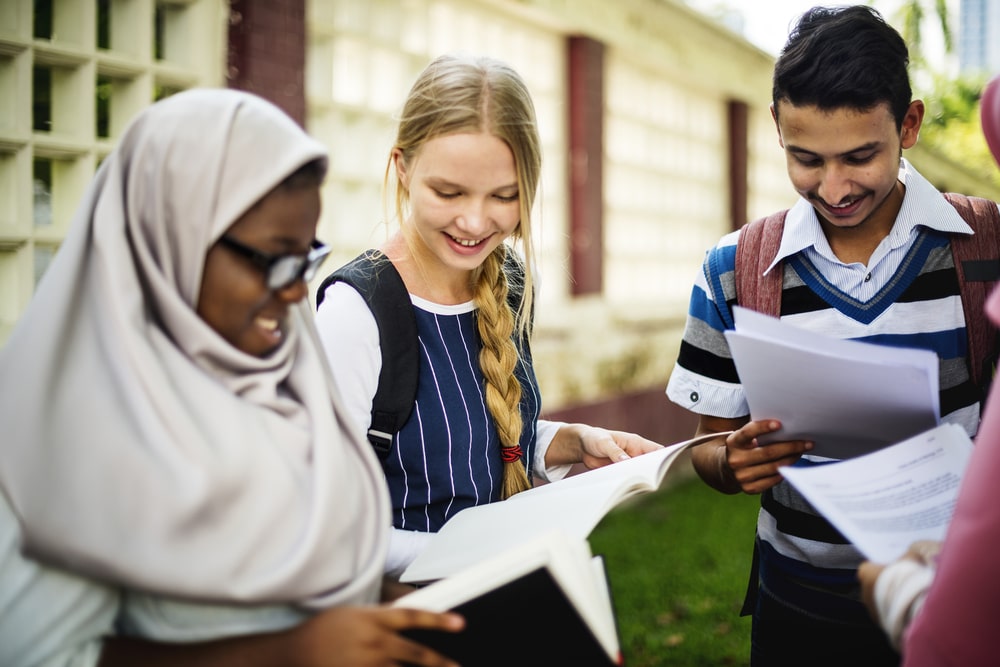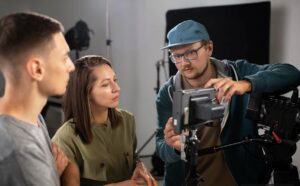Physics IA topics are a key assessment component of the International Baccalaureate program. Doing well on this project can significantly contribute to achieving overall grades at the end of the program. It is a great opportunity for students to take ownership over their education and to demonstrate that they have acquired a deep understanding of the subject matter.
For many of us, this will be the first time we tackle such a project, so it is important that we understand what comes with it. This guide will provide an overview of the basics of physics IA topics and some helpful tips for all those IB students out there who are about to take on their first physics IA project.
First off, we need to understand the different types of topics that may be involved in a physics IA project. Depending on which course you are studying, topics may fall under Astrophysics, Mechanics, Materials or Thermodynamics. While each of these categories covers a range of scientific concepts, it’s important to select one that you are comfortable and confident in being able to explore deeply.
When choosing a topic, it is important to keep in mind the purpose of an IA project and the criteria that examiners use when assessing them. Additionally, and perhaps more importantly, you should consider what kind of research methods and sources you should use to effectively answer the question you choose. Academic journals, experiments and other sources of information should all be considered as part of your research process.
Finally, once you’ve picked your topic, it’s time to get started on writing, producing and presenting your IA. Writing your IA requires good structure and organization, as well as a clear point of view and evidence to back up your argument. For productions and presentations, creativity, innovation and storytelling are all key elements that will help you to build an impressive conclusion to your project.
In conclusion, physics IA topics can be a complex and comprehensive undertaking. With the right planning, research and execution however, students can put together a successful IA project that can significantly contribute to their overall grades. Be sure to keep this guide handy for handy tips and advice throughout your project!
1. Investigating Projectile Motion and Air Resistance
- RQ1: How does launch angle affect the horizontal range of a projectile in the presence of air resistance?
Overview: Set up an experiment using a launcher to fire projectiles at various angles, measure ranges, and compare the data with theoretical predictions that include drag factors. - RQ2: To what extent does projectile mass influence its trajectory and range?
Overview: Vary the mass of projectiles while keeping initial velocity constant, then analyze how changes in mass affect air resistance and overall range. - RQ3: How does surface roughness of a projectile alter its air resistance and flight characteristics?
Overview: Modify projectile surfaces (smooth vs. rough) and record differences in range and flight stability, comparing results with aerodynamic models.
2. The Damping of a Simple Pendulum
- RQ1: How does the length of a pendulum affect its damping rate over time?
Overview: Vary pendulum lengths and measure amplitude decay over successive swings to analyze the relationship between length and energy loss. - RQ2: To what extent does air resistance contribute to the damping of a pendulum’s oscillations?
Overview: Compare oscillation decay in a standard air environment versus a reduced-pressure setup, linking experimental observations to theoretical damping equations. - RQ3: How does the mass distribution of the pendulum bob influence its damping characteristics?
Overview: Use bobs with different moment of inertia distributions and examine the rate of amplitude reduction relative to theoretical models.
3. Temperature Dependence of Electrical Resistance
- RQ1: How does the resistance of a metal conductor change as a function of temperature?
Overview: Measure resistance at various controlled temperatures using a thermally insulated circuit and analyze the linear relationship predicted by the temperature coefficient of resistance. - RQ2: To what extent do different materials (copper, aluminum, etc.) exhibit unique temperature-resistance profiles?
Overview: Compare the temperature coefficients of several conductors to understand material-dependent properties. - RQ3: How does the resistance behavior of a semiconductor differ from that of a metal with temperature variation?
Overview: Investigate the inverse temperature dependence in semiconductors and compare the results with metal conductors using experimental data.
4. Efficiency of Solar Panels Under Varying Conditions
- RQ1: How does the angle of incidence of sunlight affect the power output of a solar panel?
Overview: Measure solar panel output at different tilt angles under consistent light conditions and graph the efficiency as a function of angle. - RQ2: To what extent does ambient temperature influence the efficiency of a solar panel?
Overview: Record output power while varying the temperature (using controlled heat sources or time-of-day differences) and analyze efficiency changes. - RQ3: How do different wavelengths of light affect the electrical output of a solar panel?
Overview: Use filters to isolate specific wavelengths and measure the corresponding power output, discussing the spectral response of the panel.
5. Investigating Magnetic Field Strength in Solenoids
- RQ1: How does the number of turns in a solenoid affect its magnetic field strength at the center?
Overview: Vary the number of coil turns while keeping current constant, and measure the magnetic field using a gaussmeter to compare with theoretical predictions. - RQ2: To what extent does the current through a solenoid influence its magnetic field distribution?
Overview: Record magnetic field strength at different current values and plot the relationship to confirm linearity. - RQ3: How does the length of a solenoid affect the uniformity of its magnetic field?
Overview: Compare field measurements at different positions inside solenoids of various lengths, discussing edge effects and field uniformity.
6. Investigating the Conservation of Energy in Collisions
- RQ1: How accurately is mechanical energy conserved in elastic collisions using air track gliders?
Overview: Conduct collision experiments and measure velocities pre- and post-collision to compare kinetic energy sums with theoretical conservation laws. - RQ2: To what extent do inelastic collisions deviate from energy conservation, and how is this energy transformed?
Overview: Measure energy loss in collisions where objects stick together, and analyze the energy converted to sound, heat, or deformation. - RQ3: How do variations in mass and velocity affect the energy loss in near-elastic collisions?
Overview: Vary the masses and speeds of colliding objects and analyze the relationship between these factors and the observed energy loss.
7. Wave Interference and Diffraction Patterns
- RQ1: How does slit width influence the diffraction pattern produced by a single slit?
Overview: Use a laser and adjustable slit apparatus to measure diffraction patterns, and compare experimental fringe widths with theoretical predictions. - RQ2: To what extent does the wavelength of light affect the interference pattern in a double-slit experiment?
Overview: Employ lasers of different wavelengths, record fringe patterns, and analyze the relationship between wavelength and fringe spacing. - RQ3: How do variations in the distance between slits affect the resulting interference fringes?
Overview: Alter the separation distance and measure changes in the fringe pattern, comparing findings with mathematical models of interference.
8. The Photoelectric Effect
- RQ1: How does the frequency of incident light affect the kinetic energy of emitted electrons from a metal surface?
Overview: Set up an apparatus to measure electron emission using varying light frequencies, plotting kinetic energy versus frequency to determine Planck’s constant. - RQ2: To what extent does the intensity of incident light affect the photoelectric current?
Overview: Vary the light intensity and measure the resulting current, analyzing the relationship predicted by the photoelectric effect theory. - RQ3: How do different metal surfaces compare in terms of work function as determined by the photoelectric effect?
Overview: Use different metals, measure cutoff frequencies, and calculate work functions to compare material properties.
9. Investigating Oscillations in RLC Circuits
- RQ1: How does the resistance in an RLC circuit affect the damping of oscillations?
Overview: Construct RLC circuits with varying resistances, record voltage oscillations, and analyze damping behavior relative to theoretical models. - RQ2: To what extent does capacitance influence the resonant frequency of an RLC circuit?
Overview: Vary capacitance values, measure resonant frequency, and compare experimental results with the theoretical resonance formula. - RQ3: How does inductance variation alter the transient response in an RLC circuit?
Overview: Change the inductance in the circuit, observe transient voltage and current responses, and analyze the effect on oscillatory behavior.
10. The Doppler Effect in Sound
- RQ1: How does the relative speed between a sound source and observer affect the perceived frequency?
Overview: Conduct experiments using a moving sound source and record frequency changes with a microphone, comparing the data to the Doppler formula. - RQ2: To what extent do environmental factors (temperature, medium) influence the magnitude of the Doppler shift?
Overview: Perform tests under varying conditions (e.g., different temperatures) and analyze changes in perceived frequency. - RQ3: How can the Doppler Effect be used to measure the speed of a moving object?
Overview: Develop an experimental setup where frequency shifts are used to calculate object speed, then compare with direct speed measurements.
11. Investigating Fluid Dynamics: Viscosity Measurements
- RQ1: How does temperature affect the viscosity of a given liquid?
Overview: Use a viscometer to measure viscosity at different temperatures and compare the experimental data with the Arrhenius-type behavior of fluids. - RQ2: To what extent does the addition of solutes (e.g., sugar or salt) alter the viscosity of water?
Overview: Prepare solutions with varying solute concentrations, measure viscosity, and analyze the data to establish a quantitative relationship. - RQ3: How do different fluid models (Newtonian vs. non-Newtonian) describe the behavior of everyday liquids?
Overview: Compare viscosity measurements of fluids known to be non-Newtonian (like ketchup) with water, discussing their flow characteristics.
12. Investigating the Efficiency of Energy Transfer in a Mechanical System
- RQ1: How effectively is mechanical energy conserved in a pendulum system with friction?
Overview: Measure amplitude decay in a pendulum over time, calculate energy loss, and discuss sources of friction and air resistance. - RQ2: To what extent do material properties (e.g., elasticity) affect energy transfer in collisions?
Overview: Use objects with different elastic properties in collision experiments, record rebound heights, and analyze energy transfer efficiency. - RQ3: How does the design of a roller coaster (e.g., height and curvature) affect energy conservation and conversion between potential and kinetic energy?
Overview: Model a roller coaster track, measure speeds at various points, and compare calculated energies with measured values.
13. Investigating Light Intensity and Inverse Square Law
- RQ1: How does light intensity vary with distance from a point light source?
Overview: Use a light sensor to measure intensity at various distances and analyze the results according to the inverse square law. - RQ2: To what extent do obstacles or reflectors alter the expected intensity distribution?
Overview: Introduce reflective surfaces and barriers, measure changes in intensity, and discuss deviations from the theoretical model. - RQ3: How can ambient light conditions be quantified and modeled in an indoor environment?
Overview: Measure light intensity at multiple points in a room and develop a model accounting for reflections and absorption by surfaces.
14. Investigating Thermal Conductivity of Materials
- RQ1: How does the thermal conductivity of various metals compare under controlled conditions?
Overview: Measure temperature gradients across metal samples and calculate thermal conductivity, comparing the values to known standards. - RQ2: To what extent does thickness influence the thermal conductivity of an insulating material?
Overview: Vary the thickness of insulating materials, measure heat flow rates, and analyze the relationship between thickness and thermal resistance. - RQ3: How does surface treatment (e.g., painting or polishing) affect the thermal conductivity of a material?
Overview: Compare treated and untreated samples, measuring heat transfer rates and discussing the impact of surface properties.
15. Investigating the Relationship Between Pressure and Volume in Gases
- RQ1: How does changing the pressure affect the volume of a confined gas at constant temperature?
Overview: Perform experiments using a gas syringe or pressure chamber to verify Boyle’s Law and plot pressure-volume relationships. - RQ2: To what extent do real gases deviate from ideal behavior under high-pressure conditions?
Overview: Compare experimental data with ideal gas predictions, discussing deviations and the impact of intermolecular forces. - RQ3: How can modifications to the ideal gas law account for observed discrepancies in experimental data?
Overview: Use the van der Waals equation to model experimental results, explaining the correction factors for real gases.
16. Investigating Electromagnetic Induction
- RQ1: How does the speed of a magnet passing through a coil affect the induced voltage?
Overview: Set up an experiment with a coil and moving magnet, record induced voltage for different speeds, and analyze the data using Faraday’s law. - RQ2: To what extent does the number of coil turns influence the magnitude of the induced emf?
Overview: Vary the number of turns in a coil, measure induced voltage under similar conditions, and compare with theoretical predictions. - RQ3: How does the orientation of a magnet relative to a coil affect electromagnetic induction?
Overview: Change the angle of the magnet’s approach and record the induced emf, discussing the role of magnetic flux in the process.
17. Investigating the Behavior of Capacitors in AC Circuits
- RQ1: How does the capacitance value affect the phase difference between current and voltage in an AC circuit?
Overview: Construct circuits with different capacitors, measure phase differences with an oscilloscope, and compare the results with theory. - RQ2: To what extent does frequency influence the capacitive reactance in an AC circuit?
Overview: Vary the AC frequency, record voltage and current data, and analyze how capacitive reactance changes with frequency. - RQ3: How do series and parallel configurations of capacitors affect overall circuit impedance?
Overview: Build circuits with capacitors arranged in series and parallel, measure impedance, and compare the outcomes with expected values.
18. Investigating the Effects of Lens Curvature on Focal Length
- RQ1: How does varying the curvature of a convex lens affect its focal length?
Overview: Use lenses with different curvatures, measure focal lengths using an optical bench, and compare the experimental values with lens-maker’s formula predictions. - RQ2: To what extent does refractive index variation of the lens material influence the focal length?
Overview: Experiment with lenses made from different materials, calculate focal lengths, and analyze the influence of refractive index. - RQ3: How does lens thickness impact the accuracy of the thin lens approximation in determining focal length?
Overview: Compare measured focal lengths of lenses with varying thicknesses and discuss the limitations of the thin lens formula.
19. Investigating the Dynamics of Rotational Motion
- RQ1: How does the distribution of mass affect the moment of inertia and angular acceleration of a rotating object?
Overview: Use rotating discs or rods with adjustable mass positions, measure angular accelerations, and compare with theoretical calculations. - RQ2: To what extent does friction influence the rotational kinetic energy loss in a spinning system?
Overview: Measure deceleration rates in rotating systems with differing friction levels, analyzing energy loss over time. - RQ3: How do changes in applied torque affect the angular acceleration of a rigid body?
Overview: Vary applied torque in controlled experiments, record resulting angular accelerations, and discuss the linearity predicted by Newton’s second law for rotation.
20. Investigating Sound Wave Propagation and Interference
- RQ1: How does the distance from a sound source affect the intensity and frequency perception due to interference?
Overview: Measure sound intensity at various distances and record interference patterns, comparing results with the inverse square law. - RQ2: To what extent do obstacles (barriers) alter sound wave propagation and interference patterns?
Overview: Set up experiments with and without obstacles, measure changes in sound intensity and interference effects, and compare with theoretical models. - RQ3: How does the superposition of two sound waves with different frequencies create beat phenomena, and what is the relationship between beat frequency and the original frequencies?
Overview: Generate two sound waves, measure beat frequency, and analyze its mathematical relationship to the individual wave frequencies.
Some more ideas:
- Investigating the relationship between the angle of incidence and angle of reflection in a plane mirror.
- Measuring the coefficient of kinetic friction between different surfaces using a simple pendulum.
- Investigating the relationship between mass and acceleration in a pulley system.
- Examining the effect of temperature on the resistance of a wire.
- Measuring the acceleration due to gravity using a simple pendulum and a stopwatch.
- Investigating the relationship between the length of a pendulum and its period of oscillation.
- Examining the effect of light intensity on the output voltage of a solar panel.
- Investigating the relationship between the distance and speed of a moving object using a ticker tape timer.
- Measuring the elastic modulus of different materials using a spring.
- Investigating the relationship between the length and frequency of a vibrating string.
- Examining the effect of temperature on the speed of sound in air.
- Investigating the relationship between the mass of a bob and the period of a simple pendulum.
- Measuring the refractive index of different liquids using a laser and a prism.
- Investigating the relationship between the temperature and pressure of a gas using a Boyle’s Law apparatus.
- Examining the effect of different masses on the terminal velocity of a falling object.
- Investigating the relationship between the angle of incidence and angle of refraction in different materials using a ray box and a protractor.
- Measuring the half-life of a radioactive substance using a Geiger counter.
- Investigating the relationship between the frequency and wavelength of sound waves in a tube.
- Examining the effect of different voltages on the current and power output of a circuit.
- Investigating the relationship between the length of a wire and its resistance.
Types of Physics IA Topics
The International Baccalaureate (IB) Physics Internal Assessment (IA) offers students the chance to explore various topics relating to physics. These topics can range from mechanics, materials, thermodynamics and astrophysics.
You might be wondering what these topics mean. Astrophysics deals with the study of celestial objects, galaxies and stars. Mechanics looks at the behavior of physical objects under the action of external forces. Materials explores the properties of different materials and their applications. Finally thermodynamics delves into the study of temperature and energy.
By selecting a topic from one of the areas mentioned above, you will have the opportunity to study the subject in greater depth. You may wish to investigate the properties of an object or its behavior when placed in different conditions. The topic should be open-ended enough so that you can generate possible research questions and hypotheses.
When selecting an IA topic related to physics, you might want to consider the following:
- It should be relevant to the IB curriculum
- It should relate to real-world problems or concepts
- It should be interesting and challenging
- It should not be too broad or too narrow
- It should be manageable in the time available
Before you decide on your IA topic, it is important that you consult your teacher or supervisor for advice. They can help you to refine your topic and provide useful feedback.
By researching and writing an IA paper on one of the physics topics outlined above, you will gain valuable knowledge and insights from the experience.
Choosing a Topic
Choosing an appropriate topic for a Physics IA can be one of the most challenging and important steps in creating a successful project. There are several considerations to make when deciding which topic to go with, and it’s important to take your time and research thoroughly. Consider the following tips to help you select the best possible topic.
- Interest: When selecting a topic, it’s important to choose something that interests you and that you feel passionate about. This will make it easier to work on the project, and it can even help you ensure a higher score from examiners.
- Practicality: Make sure your chosen topic is practical and achievable within the allotted time you have for the project. Take into account any restrictions you may have, such as access to equipment or resources.
- Depth: Aim to choose a topic that allows you to explore the subject in great detail and provide comprehensive information. This will show examiners that you’re knowledgeable and have done your research.
Considering these tips can help ensure that you select a suitable topic for your Physics IA. Taking your time to do the proper research and making sure your project is focused, practical and extensive can help ensure an impressive score from examiners.
Exploring research methods
When carrying out an independent assessment on a Physics IA topic, there are some key research methods that you should consider. The most common methods are using academic journals and conducting experiments, but there are also alternative sources of information that can be useful.
Using Academic Journals
Academic journals can be a great source of information for researching an IA topic. They usually provide up-to-date and in-depth research on topics related to the field of physics, which can be extremely helpful for informing your project. You should consult a variety of different journals in order to ensure you get a comprehensive understanding of your topic.
Conducting Experiments
Experiments are one of the best ways to gain a deeper understanding of the physics behind an IA topic. Experiments can help you to make predictions and draw conclusions about the behaviour of different objects or materials in certain circumstances. When conducting such experiments, it’s important to take accurate measurements and record them in a systematic way.
Alternative Sources of Information
Apart from academic journals and experimental research, there are also other sources of information that can help you to research an IA topic. For example, you can consult textbooks for additional scientific knowledge and consult experts in the field for further advice.
These are just some of the research methods that you should consider when researching a Physics IA topic. With the right approach and resources, you will be able to conduct efficient and effective research that will support your project.
Scoring Guidelines
When it comes to completing a Physics IA project, it’s important to understand how examiners assess the work and what criteria they use. This will ensure that your IA project meets with the necessary requirements and can achieve the best possible score.
The International Baccalaureate (IB) examiners use four assessment criteria when scoring an IA project:
- Criterion A: Planning and Design (Max 4 Points)
- Criterion B: Data Collection and Processing (Max 4 Points)
- Criterion C: Analysis and Evaluation (Max 6 Points)
- Criterion D: Communication (Max 6 Points)
These criteria provide a framework for students to create their IAs. Understanding each criterion is essential as it allows students to focus on the key areas needed for success. Below is an overview of each criterion in more detail:
Criterion A (Planning and Design) evaluates the planning and design process of the IA. This criterion considers the extent to which the student’s research question was appropriate, and the methods used were appropriate and justified.
Criterion B (Data Collection and Processing) looks at how accurate, relevant and reliable the data collected was, and how effectively it was tabulated and analyzed.
Criterion C (Analysis and Evaluation) reflects on the student’s understanding of the investigation and the extent to which they can analyse the data and draw evidence-based conclusions.
Finally, Criterion D (Communication) assesses the presentation of the student’s IA. This includes clarity and organization, accuracy of formatting and referencing, as well as the use of scientific language.
By familiarizing yourself with these criteria, you can be sure that your IA project scores highly. Take the time to think about how your IA will meet each criteria and make sure you have followed the correct format, gathered accurate data and communicated your conclusions clearly.
When writing an IA project on a physics topic, it is important to make sure that your work is well-written and engaging. Writing an effective IA is not just about gathering information; it also involves presenting the material in a way that is clear, concise, and interesting. Below, we have provided some handy tips to help you structure your IA and make sure it is as good as can be.
Firstly, create an outline of your IA before writing – this will help you keep track of all the topics you want your IA to cover, while ensuring it is structured logically. Think carefully about how you group the information into relevant sections, making sure to use an appropriate introduction and conclusion. This will help to maintain the reader’s interest in the topic.
In order to make your IA more engaging, try using helpful visual aids such as diagrams or graphs. Additionally, use subheadings to break up your text and draw attention to particular topics. Additionally, try to avoid repeating yourself and keep sentences succinct and to the point.
When adding quotations, references and bibliography, make sure to follow the formatting guidelines given by your school. Furthermore, double-check the accuracy of all your facts and figures. Finally, proofread your final draft for any typos, grammar errors and logical inconsistencies.
By following these tips, you should be able to write a great IA project that has everything an examiner is looking for. As long as your IA is well-structured and engaging, you should get a high score. Good luck!
Productions & Presentations:
While an Internal Assessment (IA) on a physics topic primarily focuses on written content, it may also contain other components such as production and presentation elements. These have their own importance and purpose within the IA, which is worth noting for any student preparing for the assessment.
The purpose of including production and presentation elements in an IA is to emphasize the understanding and knowledge that has been gained from researching the chosen topic. By creating a visual or audio representation of some aspect of the topic, it gives the student the opportunity to demonstrate their understanding of the chosen concept in a more tangible way.
Depending on what you choose to create, there are various ways to create productions and presentations for your IA. For example, if you are considering a more visual-based production, you could use tools such as Microsoft PowerPoint or Adobe Creative Suite to create images, charts and other graphic representations. Alternatively, you may decide to incorporate audio into your presentation, using tools like Apple’s GarageBand to create sound clips or pieces of music related to the topic.
Finally, when putting together your production and presentation, it is important to remember to keep it concise and well-organized. Make sure to include only the relevant information and be sure to follow the prescribed scoring guidelines since this will have an effect on your overall assessment score.
Conclusion
This guide has provided an overview of the process of selecting and researching a topic for a physics IA project. We have explored the different topics possible, as well as tips on how to choose, research and write up your project. We also discussed the importance of incorporating a production and presentation element into your project, and how to best prepare for that.
These steps can help to ease the process of writing a physics IA project, but it is important to remember that there are still many other resources at your disposal. Professional tutoring services, online courses and tutorials, discussion forums, lectures and more can all be beneficial in helping you to gain a deeper understanding of your chosen topic.
Finally, don’t forget to ask your teachers and peers for advice and feedback on your work throughout the entire process. Remember, practice makes perfect. With enough dedication, you should be able to create a successful physics IA project.









